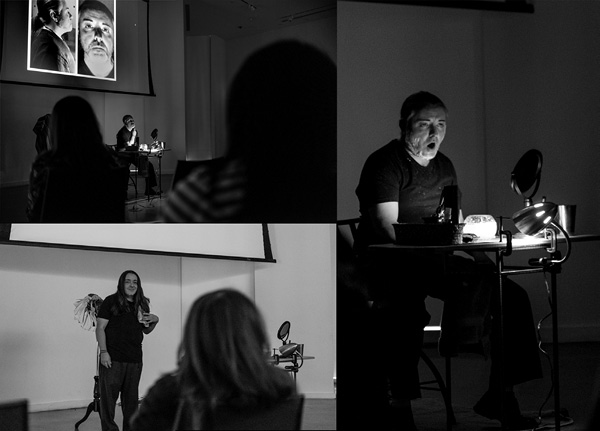
RAZOR’S EDGE
first performed on October 5, 2014
The Bronx Museum of the Arts, Bronx, NY
performed once in 2014
SEAN PAUL GALLEGOS
Bronx, NY / Albuquerque, NM
949698782s949698782e949698782a949698782n949698782p949698782a949698782u949698782l949698782g949698782a949698782l949698782l949698782e949698782g949698782o949698782s949698782@949698782g949698782m949698782a949698782i949698782l949698782.949698782c949698782o949698782m
seanpaulgallegos.com
RAZOR’S EDGE
SEAN PAUL GALLEGOS
“Razor’s Edge” addresses the factors that lead us to our perception of one’s identity. The performance explores what makes up identity and how society defines it. Whether it be cultural or physical, deciding factors often are stereotypes used to simplify and categorize. I used the performative act of shaving, a perceived typical male activity, to stereotypically portray myself in my multiple ethnicities for the audience. My father is Tewa and Spanish of New Mexico and my mother is Cree and French of Canada, resulting in an internal battle with colonialism between my Native American and European ancestry.
The performance took place in three phases. In each phase I used my facial hair to denote a specific ethnicity from my own heritage. I chose to sing songs related to each ethnicity that I have been perceived as. At the beginning of the performance a photo was taken of my profile and then projected for reference on the wall above. Photos continued to be taken after each of the three times I shaved. These then projected photos became visual markers to aid in the understanding of my visible transformation.
I took my place at my shaving station complete with shaving mirror, razor, towel, electric clippers, lamp, crystal rinse bowl, stainless steel cup, tissue and shaving cream. I pressed play for the music to accompany my songs and started shaving. Gradually, my facial hair went from Anglo full hipster beard (Caucasian), to a sculpted latin pencil thin beard (Latino), and finished with no facial hair (Native).
The songs chosen were Neil Diamond, “They Come to America” for the Caucasian phase, Robbie Williams, “Angels” (Spanish version) for the Latino phase and for the Native phase I chose to sing Franz Schubert, “Ave Maria.” Each of these songs hold deep time and space connections for me. “They Come to America” was a song from the white washing era of my life of being adopted and changing my surname. “Angels” is a song that I learned first in English and then heard in Spanish years later in my travels with the circus through South America. This was my re-acquaintance period with being Latino. Finally, for the Native song I chose to sing “Ave Maria” as a comment on Catholicism’s effect on Native culture, stemming from my own early childhood.
The facial hair chosen for each phase was a perception of how the world sees me. The doubts from one culture to the next, or the reassurance if my face is clean shaven and my hair is long and straight, suggests I must be native. Or maybe, I am them all.